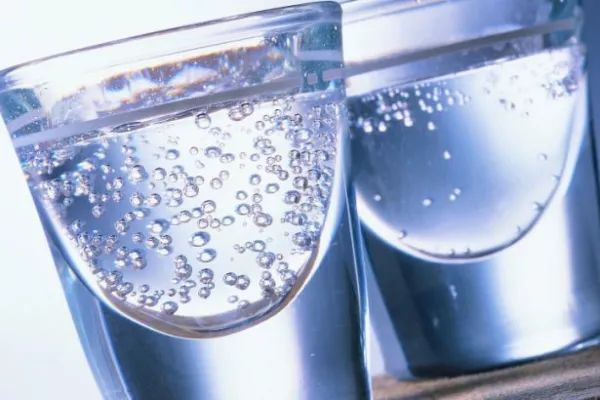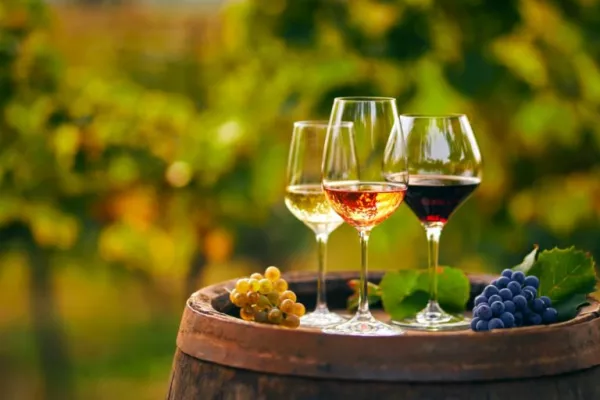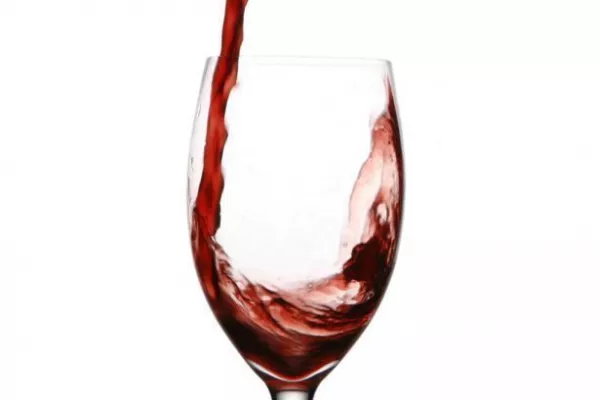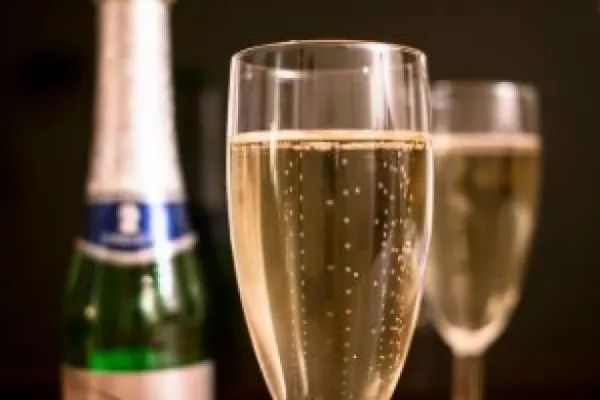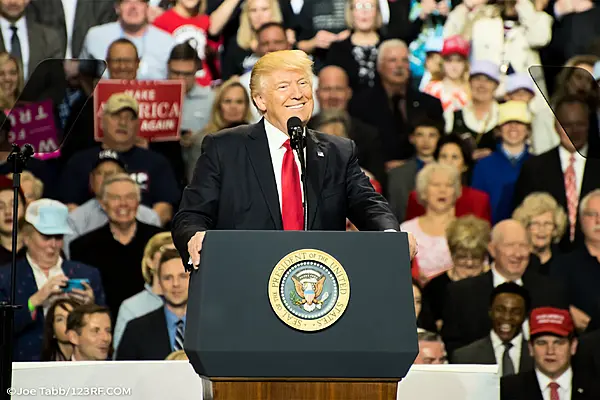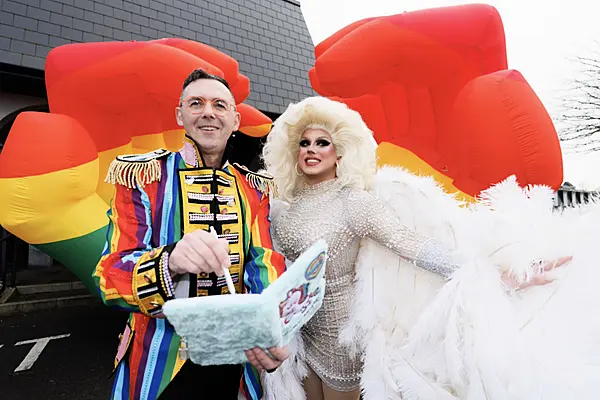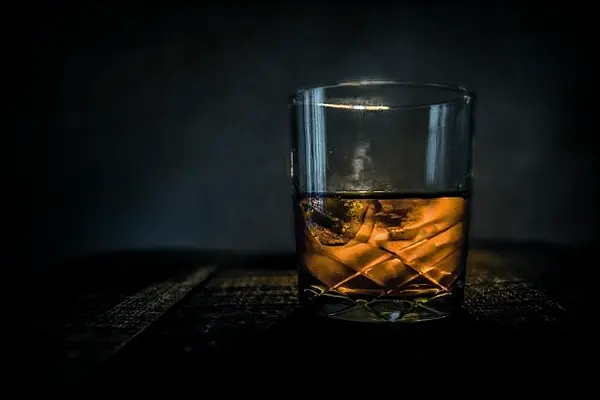Bursts of fireworks illuminated the night sky at Chateau Mouton Rothschild. Speakers in the vineyard boomed out arias from Mozart’s The Magic Flute as attendees streamed into a large white tent for dinner.
That was just one of the parties kicking off VinExpo 2017, the world’s largest wine and spirits trade fair, which was held last week at a giant exhibition space on a man-made lake north of the city of Bordeaux.
Don’t assume the bi-annual event is only about partying hard until dawn at grand wine estates, glass of something fabulous in hand. The wine and spirits’ industry’s four-day schmoozefest is actually serious international business—a place to do deals, discuss politics (Brexit, for example), trade gossip, and bone up on important issues like shipping logistics and how climate change is affecting wine.
On the first day, VinExpo signed a memorandum of understanding with the Alibaba Group’s T-Mall Marketplace to partner in various marketing activities, including promoting the trade expo online, for the next four years. At the final party, rumors were flying that the billionaire Bouygues brothers, owners of Chateau Montrose, were buying cult Loire Valley estate Clos Rougeard. (It’s true—but no word yet on how much they paid.)
And, of course, the tradeshow is a primo spot to launch new products.
I spent my days tracking down the newest of the new among the 2,300 exhibitors from 40 countries, looking for highlights. The 45,000 buyers who flew in from 150 countries were advised in advance to wear comfortable shoes as the exhibition hall is a kilometer long.
New products ranged from the silly to the sublime. Rosés were ubiquitous, as was new, unusual packaging. Provence estate Domaines Bunin combined the two with a special version of its salty, juicy Moulin des Costes rosé in a bottle covered with a dark blue geometric design created by famous tattoo artist Bob Le Blobb. The 1,000 bottle-edition will be released in Provence in August.
The pink wine would look great in Riedel’s new Fatto a Mano line of wine glasses with jazzy colored stems.
Here the picks for the most exciting new offerings:
Taiga Shtof Vodka ($80)In a round white booth shaped like a traditional Siberian yurt, photos of the region’s wildly beautiful landscape were streamed on walls as I sampled this new super premium vodka from Siberia alongside heaping spoonfuls of briny caviar.
The taste actually lived up to its story. The two major ingredients are what make it special. The founders, a former CEO of Group Baron Philippe de Rothschild, his former Russian export director, and two other well-connected wealthy Russians, combed Siberia to select the purest H2O from three pristine areas—Lake Baikal, deep below the permafrost of Yakutia, above the Arctic Circle, and in the mountains of Altai between Mongolia and Kazakhstan. The second key, they say, is using super pure Alpha grade spirit distilled from Siberian winter rye and resilient wheat actually grown under the snow.
The taste is softer, smoother and more delicate than most vodkas, very pure and elegant, like biting snowflakes on your tongue. The name Taiga refers to the forest and vast region in Siberia where the water is sourced, while shtof is an ancient Russian term meaning the traditional bottle from which Russians used to drink vodka.
Veuve Clicquot Extra Brut Extra Old ($90)Powerhouse champagne brand Veuve Clicquot was pouring its bubblies at a pop-up bar by the lake, including this new cuvee that combines two current champagne trends: bubbly made from older reserve wines and a boom in very, very dry cuvees.
The six vintages of reserve wines in Veuve Clicquot’s new blend (Extra Old, get it?) are mostly pinot noir, with the youngest from 2010 and the oldest 1988, a truly great year for classically structured, concentrated wines. Of the several all-reserve champagnes debuting at the fair, it was the best, complex and harmonious, with a subtle richness and softer, less effervescent bubbles.
It’s also the champagne house’s first super dry—Extra Brut—fizz, so it’s very good as an aperitif to sip and sip some more.
2015 Bodega Garzon Balasto ($80 to $90)At the Bodega Garzon stand, the Uruguayan winery’s first “icon wine” (the nickname for a flagship cuvee in South America) was displayed alongside rocks from the vineyard in a glass-fronted niche, as if it were a sacred statue. But the red also made an appearance at a dinner where open-fire cooking wizard Francis Mallmann dazzled the French with juicy fire-seared meat.
The silky-textured red, a spicy, savory blend of four grapes—tannat, cabernet franc, petit verdot, and marselan—is the latest release from the huge pioneering winery owned by billionaire Alejandro Bulgheroni. It’s a selection of the best of the 1,150 plots in the 500-acre vineyard, explained winemaker Antonio Antonini, who said, “A good vineyard is like a cow. It has many parts. You have to understand where the filets are.”
The wine won’t be made every year, so consider snapping up one of the 8,888 bottles or 1,000 magnums.
2013 Silver Heights The Summit ($45) and 2013 Legacy Peak Family Heritage ($160)Few premium Chinese wines have been exported, so I was excited to see that 20 boutique producers in the country’s most prestigious growing area, Ningxia, were splashing out their wares. Several are set to debut in the U.S. and elsewhere later this year.
Ningxia, the remote arid region nicknamed China’s Bordeaux, is in north-central China, south of Inner Mongolia, where it’s so cold in winter, producers have to bury their vines. The flagship wines of two of them were from the Helan Mountains area, a hotbed of vineyard development, and were very impressive. Silver Heights’ cab-merlot blend is all about soft, dark, ripe fruit and spice, while the plush Legacy Peak is a smooth, savory cabernet sauvignon with soft, appealing tannins. (Only 1,800 bottles of the latter were made.)
No, these don’t compete yet with cru classe Bordeaux, but they do show China’s serious wine potential.
2016 Metissage Blanc ($15)Climate change and global warming and their effects on the wines we drink were big topics this year. One major takeaway: regions like Bordeaux may eventually be too hot for the grapes that now flourish there, so vineyards may have to plant alternatives that can withstand heat and disease.
The Ducourt family in Bordeaux’s Entre-Deux-Mers area debuted wines from new hybrid grapes that may be a part of that future.
The most promising was white grape Cal-04, a proprietary, experimental, natural crossbreed of sauvignon blanc, riesling, and secret “wild vines.” The grape hangs on to the high acidity needed to make bright fresh whites even in extended heat waves (like the 100 degrees Fahrenheit temperatures in Bordeaux during VinExpo). The Ducourt’s inexpensive bottle is crisp and tart, like a soft version of sauvignon blanc with citrus overtones and floral aromas.
Legally, growers in Bordeaux can only plant a short list of grapes. The Ducourts obtained a special waiver for this one, and won’t be able to put the name Bordeaux on the label unless it becomes an officially permitted variety.
This inexpensive white is hardly going to satisfy those who crave Bordeaux’s great chateau reds and whites at 10 times the price. But Metissage blanc is everything you want in a summer quaffer. Be prepared to see this grape taken seriously.
News by Bloomberg, edited by Hospitality Ireland
